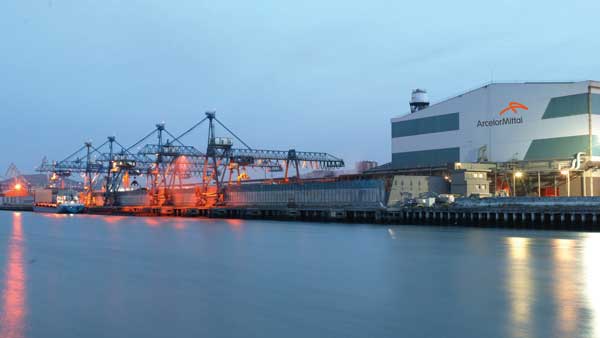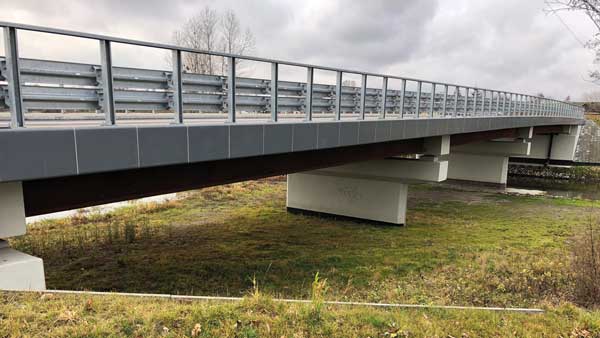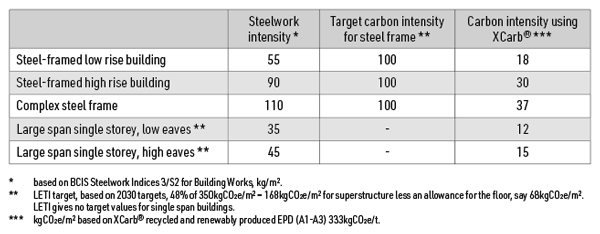Projects and Features
Steel is the sustainable choice

ArcelorMittal says that for many years steel has been the world’s most prolific construction material and its excellent sustainability credentials and recyclability has made it the material of choice in many sectors.
There is little doubt that the current climate emergency is impacting on all sectors and that success in achieving the Paris Agreement targets will be hard won.
The decarbonisation of steel’s manufacturing processes will contribute greatly to a zero-carbon world and, with 50% of steel production being used in buildings and infrastructure, steel construction has a major part to play.
Decarbonisation is the most important aspect of ArcelorMittal’s long-term strategy. We are committing to reduce European CO₂ emissions by 35% by 2030 and be carbon neutral by 2050.
ArcelorMittal has been working hard to be at the forefront of the technical transformations needed to decarbonise the steel used in construction and has initiated many decarbonisation projects that will ensure achieving Paris Agreement targets in 2050 and also offer designers and steelwork subcontractors low embodied carbon solutions.
Smarter steels for people and planet
ArcelorMittal published its latest Climate Action Report (CAR2) in July 2021. This report crystallises much of ArcelorMittal’s efforts towards the technical transformations needed to decarbonise an asset base that includes 47 blast furnaces (BF), 32 electric arc furnaces (EAF) and 12 direct reduced iron (DRI) facilities. In-depth knowledge and understanding of multi-method steel manufacturing, together with years of successful operation, places ArcelorMittal in a unique position to assess and implement the technological transformation needed to decarbonise steelmaking.
The report discloses a net-zero roadmap that shows our journey to carbon-neutrality which features five levers that act as stepping stones to achieving carbon-neutrality by 2050. These are:
(1) Steelmaking transformation,
(2) Energy transformation,
(3) Increased use of scrap,
(4) Sourcing of clean electricity and
(5) Offsetting residual emissions.
Pioneering breakthrough carbon-neutral technology routes
If 2030 and 2050 targets are to be achieved, decarbonisation needs to have started already.
At ArcelorMittal’s Ghent site in Belgium, work has started with the deployment of Carbalyst and Torero technologies which are due to be commissioned later this year. Carbalyst encompasses a family of technologies involving gas-fermentation to convert waste gases into advanced bioethanol for use in transport and to make plastics. The Torero process enables waste wood and end-of-life plastics to be converted into biofuels that can replace fossil fuels in the steelmaking process. Together these processes are expected to reduce annual emissions by 900kt CO₂e per year as part of the larger 3.9Mt reduction planned for Belgium by 2030.
In Hamburg, ArcelorMittal is developing a new innovation project aimed at the first industrial-scale production and use of Direct Reduced Iron (DRI) made with 100% hydrogen as the reductant. With an annual production of 100,000 tonnes of steel, this project is due to start production by 2025.
However, the most ambitious project for ArcelorMittal is perhaps at its Sestao plant in Spain, which aims to become the world’s first full-scale zero carbon-emissions steel plant. By 2025, the Sestao plant, which manufactures a range of flat steel products for the automotive, construction and general industry sectors, will produce 1.6 million tonnes of zero carbon-emission steel. This will be achieved by increasing the use of scrap and using green hydrogen-produced DRI, powering all steelmaking assets with renewable electricity and introducing several key emerging technologies to replace the remaining use of fossil fuel with carbon-neutral energy inputs, such as sustainable biomass or green hydrogen.
Towards carbon neutral steel with XCarb®
ArcelorMittal’s decarbonisation strategy has led to the development of XCarb®, which brings together all our current reduced, low and zero-carbon products and steelmaking activities.
Firstly, an XCarb® innovation fund to which ArcelorMittal commits $100m per year to the development of technologies that lead to the acceleration of decarbonising steelmaking.
Secondly, XCarb® green steel certificates are aimed at products currently made via the blast furnace route. The decarbonisation investments we have underway are resulting in significant CO₂ savings. We can now pass these savings onto our customers in the form of a certificate, which has been verified by an independent auditor. In 2021, 100kt of XCarb® green steel certificated products were available, and this figure is expected to be extended to 600kt in 2022.
Finally, there is XCarb® recycled and renewably produced, which uses scrap and 100% renewable energy in an electric arc furnace, giving our finished steel products an extremely low CO₂ footprint.
For this strand of XCarb® environmental product declarations (EPDs) are published which credit rolled sections with an “up-front” A1-A3 embodied carbon value of 333kgCO₂e/t. Also, synergies in smart design can combine XCarb® recycled and renewably produced sections with Histar460 for very low embodied carbon columns and trusses, and Arcorox® weathering steel for lower embodied carbon solutions in infrastructure projects.
Achieving low carbon targets in construction
The low carbon intensity achievable with XCarb® recycled and renewably produced is shown in the table below against LETI targets. It is shown that the low carbon intensities achieved using XCarb® allow 2030 targets to be met today.
ArcelorMittal
is a headline sponsor of
Steel for Life











